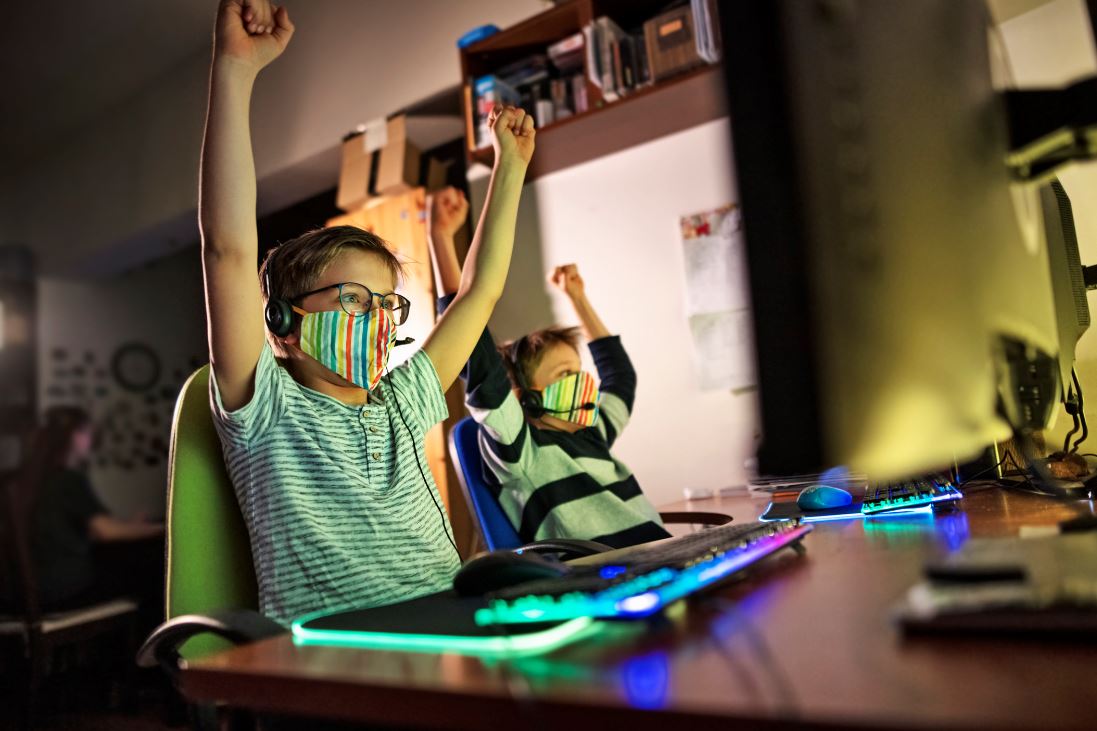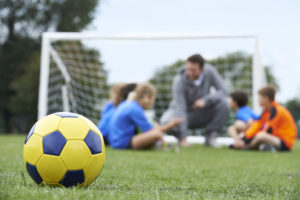
Physical Education (PE) classes can take a lesson from video games, according to a few innovative Australian teachers bringing them together to reinvent the way that PE connects to the rest of the curriculum, the wider world, and the interests and motivations of students.
New research by Flinders University’s Associate Professor Shane Pill and colleagues from Charles Sturt, University of Southern Queensland and the University of Canberra examines the intersection between teaching PE, and video games.
By looking to video games for principles that cross over to lesson plans, the study has found that teachers are aligned with ideas that education researchers and theorists have been mining for years.
“The research tells us that PE needs to be done differently, and this is an example of PE being done differently,” says Associate Professor Pill, from the Flinders Sport, Health, Activity, Performance and Exercise (SHAPE) Research Centre.

“We have become used to a command-style that historically dominates coaching and teaching. PE teachers are really working to move beyond that, but a reliance on teaching sport through the repetition of certain techniques tends to crowd out the possibility of developing thinking players and focussing on problem solving.”
One of the study’s participants – Simon (pseudonym) a primary school PE teacher in the public system for 23 years – has changed into an education designer by approaching his lessons from the perspective of games.
“In his teaching, he now has more options to engage and then extend student learning than he did in the sport-first paradigm he has been using,” says Associate Professor Pill.
Each lesson is more connected to the next than when he was teaching a series of discrete units of sport.
As Simon puts it: “The big thing I have picked up is that physical education is about the ability to move and to understand. Otherwise, we are just physical activity providers.
“Digital game design principles allow me to bring in the possibility for kids to understand themselves as learners and movers, themselves as collaborators.”
Simon came across the concept of gamification about three years ago, during a time when he had been thinking deeply about what motivates children to play and learn through watching his own children engage with digital game platforms.
“Simon observed the problem-solving, progression through levels, challenge, and reward, and started to think about how that encouraged and motivated participation,” explains Associate Professor Pill.
“He began reading and listening and watching podcasts and videos about gamification and digital game design. He took these ideas from games in order to create a classroom situation where students could engage their strengths, and from there, develop and improve.”

“We need to teach for this generation, not our generation,” adds Associate Professor Pill. “Looking at my kids and what they get out of video games, I could see that the way the games presented them with problems to solve was really skilfully designed to keep them engaged and persisting, despite the frustrations along the way.”
Another teacher focussed on is Chris (a pseudonym), who has been teaching PE for 10 years from Foundation to Year 12, in Australia and the United Kingdom. Chris now also works as a provider of physical education professional development.
In both roles, Chris uses game design principles to structure his educating. A game mechanic that Chris has applied widely is the concept of missions.
“Within a mission, each person has a specific role. Look at Fortnite. I was talking to someone who plays a lot. He says, he is no good at it, and so his job in the team is just to run around and hide, help people with their energy and to get it back. I thought, that is so smart. In sport, not everyone is going to be great. In elite sport you have players who are there to play a specific role.”
Chris uses missions to build his classes around a story. “My favourite game mechanic is narrative. I feel that everything has a story. If there is an engaging story people will listen to it. So why don’t we make tales, or scenarios, or stories.” He believes that these methods not only allow PE to be more relevant to the rest of a student’s curriculum, like English, social studies, or drama, but will provide personal lessons that will have a greater impact on the students’ lives than drilling technical skills, as he used to.
“I was not focussing on the things that matter. I use gamification and game mechanics now to try and teach things that matter, like gratitude.”
For Assoc Prof Pill, the principles of game design provide new ways to work on the crucial problem that PE teachers must solve. “Teaching sport in PE brings you up against a challenge that is the same as one facing digital game designers. How do you get a person to commit to something that is sophisticated, complex, involves repeated failure, where mastery is a long way off – and have them thoroughly enjoy it?”
“Game designers are already applying educational theory to their work. I thought that surely we can learn from this in physical education.”
‘Physical Education Teachers’ Use of Digital Game Design Principles’. Journal of Teaching in Physical Education (2021) by Shane Pill, Brendon Hyndman, Brendan Sue and John Williams has been published in DOI: https://doi.org/10.1123/jtpe.2019-0036
Release prepared by the Media Centre for Education Research Australia (MCERA), an independent, not-for-profit organisation based at Flinders University which aims to give the public a understanding of key education-related issues.

